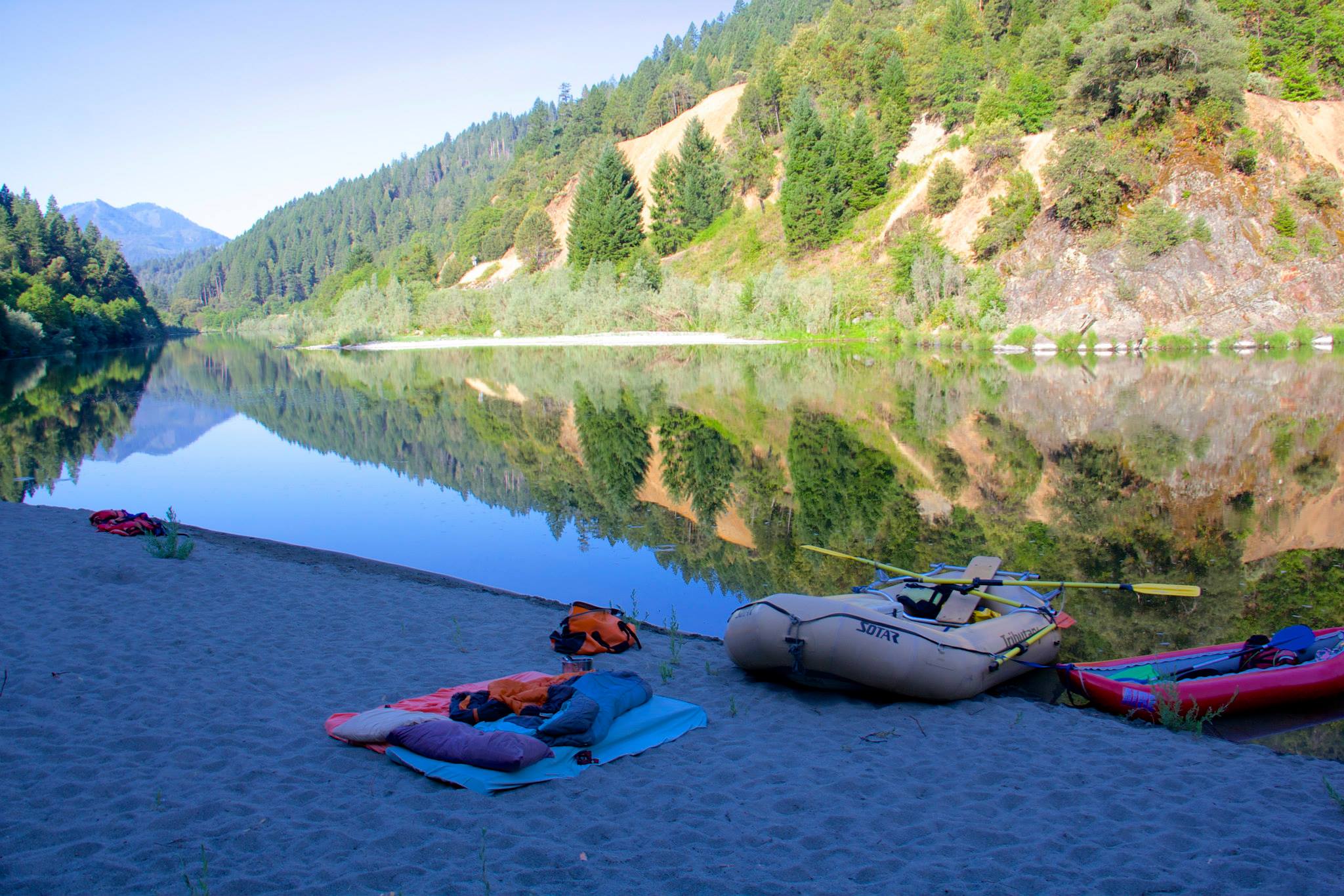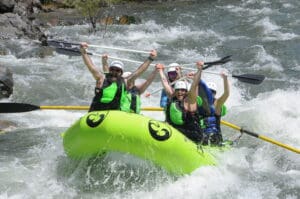Update 6/17/2024: We are back on the Lower Klamath River! After reassessment of the sediment that caused us to put a pause on operations earlier this spring, we are now able to run whitewater rafting trips on the Lower Klamath River this summer. Lower Klamath River rafting is only available through the end of July so be sure to book before its too late!
—-
The Klamath Dam removal project, which began in 2023, has affected both the Upper and Lower Klamath portions of our whitewater rafting trips for the 2024 season. The Upper Klamath is directly affected by the location of the dam removal while the Lower Klamath portion is seeing an increase of sediment downstream from the project. After connecting with local agencies, and considering the best course of action for the project and guests, we will not be running whitewater trips on either section of the Klamath River this summer. We are in full support of the Klamath Dam removal project and reviving a river to its natural state.
__
The Klamath River, one of Califonia’s first Wild and Scenic rivers and once the third largest salmon-producing river on the West Coast, has been drastically altered in the last century by six hydroelectric dams. These dams have disrupted the natural flow of the river, stagnating and warming the waters. The damming of the Klamath River has had long-lasting effects on the people and wildlife that call the river corridor home. Salmon, in particular, have been greatly impacted, the warm waters causing stress and disease, and the dams themselves reducing salmon habitat and blocking them from reaching their native spawning grounds.
Native American tribes living in the Klamath River Basin have also suffered, as salmon have long been one of their primary food sources. The Yurok, Karuk, and Hoopa Valley Tribes have been advocating for the removal of four Klamath dams since 2001. In 2020, after two decades of negotiations over water rights and salmon runs, the Klamath River Renewal Corporation announced that the JC Boyle, Copco 1, Copco 2, and Iron Gate dams would be removed, in what will be the largest dam removal and river restoration project in history. The removal is an incredible win for the Klamath River and a step to restoring a cultural landscape that Indigenous peoples have called home since time immemorial.
The smallest dam, Copco 2, was removed in 2023, and the drawdown process started at Copco 1, JC Boyle, and Iron Gate dams in January 2024. During the drawdown, the reservoirs behind each dam were drained, releasing the water back into the Klamath River. By mid-February, the drawdown process was complete. Revegetation of the now-emptied reservoirs is underway; tribal members have been collecting native seeds and propagating native plants in nurseries for more than five years, and more than 17 billion seeds will be planted. Throughout the rest of the year, the four dams will be completely removed from the Klamath River.
However, dam removal is a messy affair. Over a century’s worth of sediment has accumulated behind the dams, an estimated 17 to 20 million cubic yards of silt, clay, and dead algae. The reservoir drawdown released about half of that sediment into the river, which will cause a few negative short-term impacts as the sediment disperses and the river finds its historic bed. Fish, in particular, will be affected, though every effort has been made to move young salmon to safe, creek-fed holding ponds while the sediment settles.
The dams’ removal will also affect short-term rafting opportunities on the river. The Klamath is unlikely to see any whitewater rafting during 2024 as the reservoirs are drawn down and the dams are deconstructed. Future trips may also change, particularly on the Upper Klamath River; summer rafting trips on this section have long been possible because of the daily, timed release of water from the JC Boyle Dam, which is set to be removed this year. Without a dam release, the river will return to its natural, seasonal flow, potentially limiting the rafting season to the spring.
However, the restored Klamath River will, with the dams’ removal, flow free for an incredible 250 miles to the Pacific Ocean. There is the potential for new multi-day trips, and new river access points near the removed dams are being built into the restoration plan.
The short-term effects following the dam removals on the Klamath are not expected to last long, and previous dam removal projects have shown that rivers are quick to recover. In fact, according to data gathered by the Karuk Tribe downstream of Iron Gate, O2 saturation levels are already up following the drawdown, turbidity is dropping, and conditions throughout the ecosystem are improving. In the end, with the dams removed, the Klamath River will run colder and clearer, hundreds of miles of salmon habitat will be opened, and water quality will be improved for people and wildlife.
For more information, read our Klamath Dam blog series, links below.
Klamath River Dam Removal Project Update: Sept 16, 2024
Klamath River Dam Removal Project Update: August 5, 2023
Klamath River Dam Removal Project Begins: May 8, 2023





